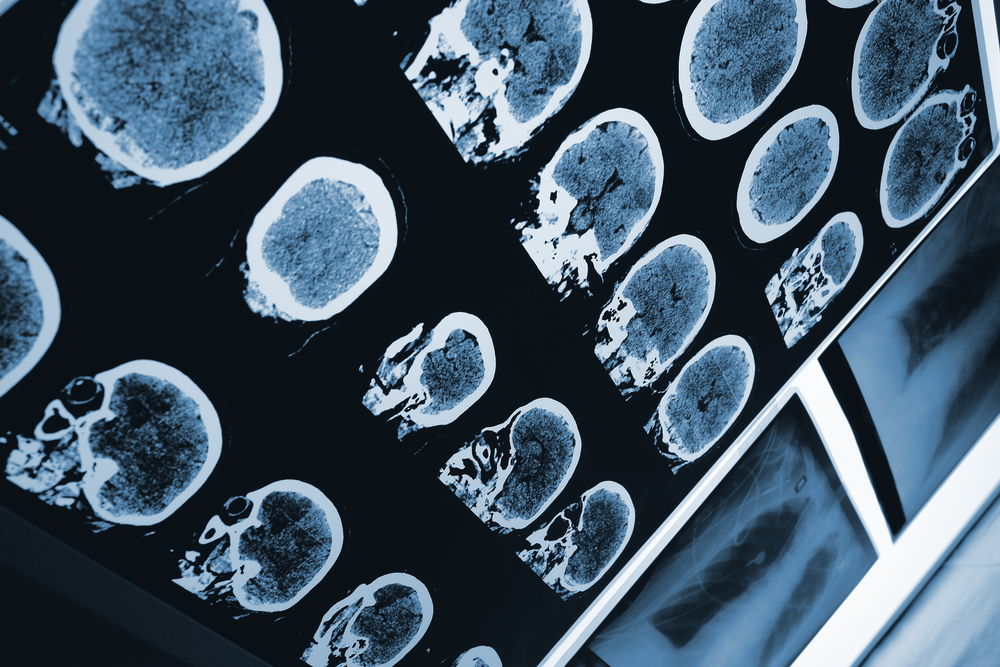PET Imaging Seen as Valuable Tool for Alzheimer’s Staging, Diagnostics
Written by |

Researchers at the University of California, Berkeley, were able to show for the first time the progressive stages of Alzheimer’s disease in healthy adults and patients with Alzheimer’s using PET scans.
This shows positron emission tomography (PET) scans can be used as diagnostic and staging tools in patients suffering from the disease. Researchers also uncovered important new information about two proteins associated with Alzheimer’s pathology: tau and amyloid-beta. The research paper, “PET Imaging of Tau Deposition in the Aging Human Brain,” was published in Neuron.
Alzheimer’s disease is often diagnosed when a series of symptoms emerge. However, definitive diagnosis has only been possible through post-mortem examination of the patient’s brain. This diagnostic issue has been greatly improved with the development of imaging tools that track amyloid deposition. And, in the past decade, tau protein has emerged as a hallmark of Alzheimer’s, with its deposition associated with symptom development.
The stages of tau deposition were discovered by German researchers Heiko and Eva Braak through brain autopsies of suspected Alzheimer’s patients. This has become known as Braak staging.
But while Braak staging was developed from autopsies, “our study is the first to show the staging in people who are not only alive, but who have no signs of cognitive impairment,” said the study’s principal investigator, Dr. William Jagust, a professor at UC Berkeley’s School of Public Health and at the Helen Wills Neuroscience Institute and a faculty scientist at the Lawrence Berkeley National Laboratory, in a news release. “This opens the door to the use of PET scans as a diagnostic and staging tool.”
Researchers used PET scans, which detect early signs of disease through cellular changes, to analyze the brains of patients at different disease stages and compared the results to healthy controls. The study included 33 cognitively healthy adults ages 64-90 and 15 patients ages 53-77 with a diagnosis of probable Alzheimer’s dementia.
The results were parallel with Braak neuropathological stages and confirmed that, upon aging, tau protein accumulates in the medial temporal lobe — the site of the hippocampus, which is related to memory. Such deposits positively correlate with a greater decline in episodic memory.
Tau accumulation was independent of amyloid protein and driven by age. Researchers also found that when tau protein spread to other parts of the brain cortex there was a higher cognitive decline, and the presence of tau outside the medial temporal lobe was associated with the presence of amyloid plaques in the brain.
Along with Jagust, the study included co-lead authors Michael Schöll, a visiting scholar from Sweden’s University of Gothenburg, and Samuel Lockhart, a postdoctoral fellow, both at UC Berkeley’s Helen Wills Neuroscience Institute.
“Tau is basically present in almost every aging brain,” Schöll said. “Very few old people have no tau. In our case, it seems like the accumulation of tau in the medial temporal lobe was independent of amyloid and driven by age.”
One question that remains to be answered is why there are so many people who have tau in their medial temporal lobe but never develop Alzheimer’s. Also, adults may have beta amyloid in their brains but be cognitively healthy. “It’s not that one is more important than the other,” Lockhart said. “Our study suggests that they may work together in the progression of Alzheimer’s.”
Researchers emphasize that the study indicates tau imaging may become a valuable tool for the development of therapies that target either amyloid or tau, depending on the stage of the disease.
“Amyloid may somehow facilitate the spread of tau, or tau may initiate the deposition of amyloid. We don’t know. We can’t answer that at this point,” Jagust said. “All I can say is that when amyloid starts to show up, we start to see tau in other parts of the brain, and that is when real problems begin. We think that may be the beginning of symptomatic Alzheimer’s disease.”





